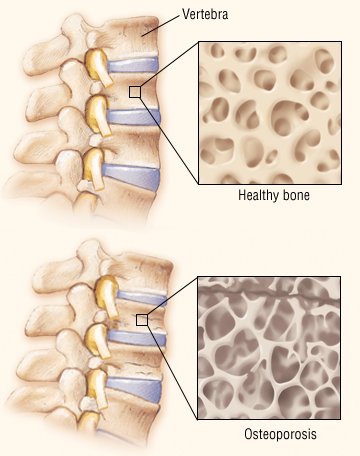Osteoporosis. Osteoporosis is a bone disease that occurs when the body loses too much bone, makes too little bone, or both. Osteoporosis is called a "silent" disease" because there are typically no symptoms until a bone is Many people with osteoporosis have several risk factors, but others who develop osteoporosis may.

Osteoporosis is a disease characterized by deterioration of bone tissue and loss of bone strength.
The word 'osteoporosis' means 'porous bone.' It is a disease that weakens bones, and if you have it, you are at a greater risk for sudden and unexpected bone fractures.
This process isn't the sole cause of osteoporosis; there are other factors that contribute to and exacerbate the onset of the disease. Overview of osteoporosis: pathophysiology and determinants of bone European guidance for the diagnosis and management of osteoporosis in postmenopausal women. An international multi-disciplinary journal which is a joint initiative between the International Osteoporosis Foundation and the National.








